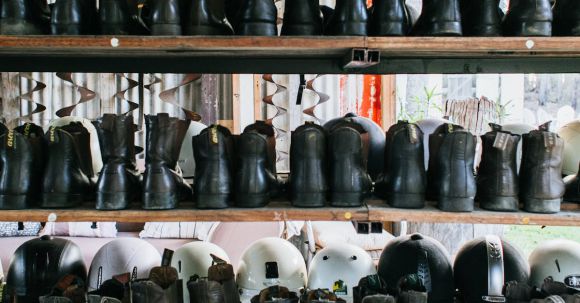When it comes to riding a bike or motorcycle, safety should always be your top priority. One essential piece of safety gear that you should never ride without is a helmet. Wearing a helmet can protect your head from potential injuries in the event of an accident. However, not all helmets are created equal, so it’s important to choose the right one for your ride. Here are some factors to consider when selecting a helmet:
1. Fit is King
The most crucial aspect of choosing a helmet is finding one that fits you perfectly. A helmet that is too loose may come off during an accident, while one that is too tight can cause discomfort and headaches. To determine the right fit, measure the circumference of your head just above your eyebrows. Use this measurement as a guide when trying on different helmets. Remember, a helmet should feel snug but not tight, with no pressure points.
2. Safety Certifications
Before buying a helmet, always check for safety certifications. Look for helmets that meet the standards set by regulatory bodies such as the Department of Transportation (DOT) or the Snell Memorial Foundation. These certifications ensure that the helmet has undergone rigorous testing and meets the necessary safety requirements.
3. Helmet Type
There are various types of helmets available, each designed for different types of riding. Full-face helmets provide the most protection as they cover your entire face and head. They are ideal for high-speed riding or off-road adventures. Open-face helmets offer less protection but provide better visibility and ventilation. They are suitable for city riding or cruising. Half helmets, on the other hand, are the most minimalistic option and are mainly worn by riders who prioritize style over safety.
4. Material Matters
Helmets are made from different materials, and the choice of material can impact its safety and comfort. The most common materials used in helmet construction are polycarbonate, fiberglass composite, and carbon fiber. Polycarbonate helmets are affordable and lightweight but offer less impact protection. Fiberglass composite helmets provide better impact absorption and are slightly more expensive. Carbon fiber helmets are the lightest and strongest but also the most expensive option.
5. Ventilation and Noise
Ventilation is essential to keep you cool and comfortable during long rides. Look for helmets with multiple vents that allow air to circulate freely. This will help prevent excessive sweating and fogging of the visor. Additionally, consider the noise level of the helmet. Some helmets are designed to reduce wind noise, which can be particularly beneficial for long-distance riders.
6. Style and Design
While safety should be your primary concern, there’s no harm in choosing a helmet that reflects your personal style. Helmets come in a wide range of colors and designs, allowing you to express your individuality. Just remember not to compromise on safety features for the sake of style.
In conclusion,
Choosing the right helmet is crucial for your safety and enjoyment while riding. Focus on finding a helmet that fits perfectly, meets safety certifications, and is suitable for your riding style. Consider the materials used, ventilation, and noise level to ensure comfort during your rides. And of course, don’t forget to choose a helmet that suits your personal style. By taking the time to select the right helmet, you can ride with confidence knowing that you have made the best choice for your protection.
